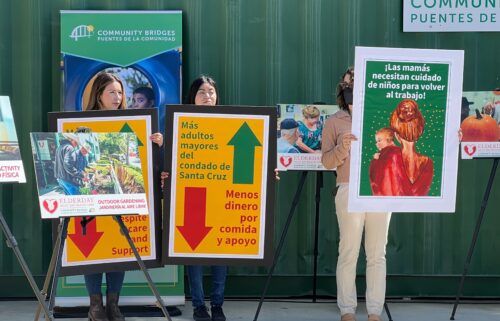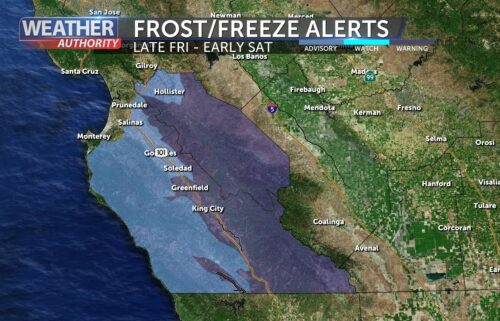CDC: Africa tourism favorite now at ‘high’ risk for Covid-19
By Forrest Brown and Marnie Hunter, CNN
The US Centers for Disease Control and Prevention has placed a popular African destination in its “high” Covid-19 risk category for travelers.
South Africa — renowned for its stunning vistas, wildlife, wineries and culture — is now at Level 3. In total, the CDC moved up four destinations to the “high” risk column on Monday:
• Antigua and Barbuda
• Lesotho
• South Africa
• Taiwan
The CDC recently overhauled its ratings system for assessing Covid-19 risk for travelers.
The Level 3 “high” risk category is now the top rung in terms of risk level. Level 2 is considered “moderate” risk, and Level 1 is “low” risk.
Level 4, previously the highest risk category, is now reserved only for special circumstances, such as extremely high case counts, emergence of a new variant of concern or health care infrastructure collapse. Under the new system, no destinations have been placed at Level 4 so far.
Lesotho, a mountainous landlocked nation within South Africa, moved up from Level 1 on Monday. All the other places had been at Level 2.
Last week, only one new destination was placed in Level 3: the British Virgin Islands.
Overall, the past four weeks of advisories have seen little in the way of the dramatic shifts in status that characterized this past winter and early spring during the original Omicron variant surge.
Level 3
In the CDC’s new system, the “Level 3: Covid-19 High” category applies to countries that have had more than 100 cases per 100,000 residents in the past 28 days.
Much of Europe has been stubbornly lodged there with the summer travel season getting ever closer. As of May 16, the following popular European destinations were among those remaining at Level 3:
• France
• Germany
• Greece
• Ireland
• Italy
• The Netherlands
• Portugal
• Spain
• United Kingdom
It’s not just European favorites that find themselves at Level 3. Several notable destinations around the world are among those in the high risk category, including the following:
• Brazil
• Canada
• Costa Rica
• Malaysia
• South Korea
• Thailand
There were about 110 destinations at Level 3 on May 16, a slight increase from May 9. Level 3 locations now account for nearly half of the roughly 235 places monitored by the CDC.
The CDC advises that you get up-to-date with your Covid-19 vaccines before traveling to a Level 3 destination. Being “up-to-date” means you have had not only the full initial vaccinations but any boosters for which you’re eligible.
Level 2
Destinations carrying the “Level 2: Covid-19 Moderate” designation reported 50 to 100 Covid-19 cases per 100,000 residents in the past 28 days. Just two places were moved to this level on Monday:
• Anguilla
• Lebanon
This was good news for the Caribbean island and the Middle Eastern getaway, which had been at Level 3. Fewer than 20 places were listed at Level 2 on Monday.
You can view the CDC’s risk levels for any global destination on the agency’s travel recommendations page.
In its broader travel guidance, the CDC has recommended avoiding all international travel until you are fully vaccinated.
If you’re concerned about a travel-specific health situation not related to Covid-19, check here.
Level 1
To be in “Level 1: Covid-19 Low,” a destination must have had 49 or fewer new cases per 100,000 residents over the past 28 days. Four destinations were added to the category on May 16:
• Jordan
• Mongolia
• Sri Lanka
• Zimbabwe
All four nations had been at Level 2 last week.
This level is dominated by destinations in Africa, including Ghana, Kenya and Rwanda. Level 1 had just over 50 entries as of Monday.
Unknown
Finally, there are destinations the CDC has deemed to be of “unknown” risk because of a lack of information. Usually, but not always, these are small, remote places or places with ongoing warfare or unrest. There was only one addition to this category on Monday: French Polynesia, which previously had been at Level 3.
The CDC advises against travel to these places precisely because the risks are unknown. Others in this category include the Azores, Cambodia, Macao and Tanzania.
A medical expert weighs in on risk levels
Transmission rates are just “one guidepost” for travelers’ personal risk calculations, according to CNN Medical Analyst Dr. Leana Wen.
We’ve moved into “a phase in the pandemic where people need to make their own decisions based on their medical circumstances as well as their risk tolerance when it comes to contracting Covid-19,” said Wen, who is an emergency physician and professor of health policy and management at the George Washington University Milken Institute School of Public Health.
There are other factors to weigh in addition to transmission rates, according to Wen.
“Another is what precautions are required and followed in the place that you’re going and then the third is what are you planning to do once you’re there.
“Are you planning to visit a lot of attractions and go to indoor bars? That’s very different from you’re going somewhere where you’re planning to lie on the beach all day and not interact with anyone else. That’s very different. Those are very different levels of risk.”
Vaccination is the most significant safety factor for travel, since unvaccinated travelers are more likely to become ill and transmit Covid-19 to others, Wen said.
And it’s also important to consider what you would do if you end up testing positive away from home. Where will you stay and how easy will it be to get a test to return home?
The-CNN-Wire
™ & © 2022 Cable News Network, Inc., a WarnerMedia Company. All rights reserved.
Top image: South Africa is renowned for stunning scenery such as Blyde River Canyon. (Lkpro/Adobe Stock)



